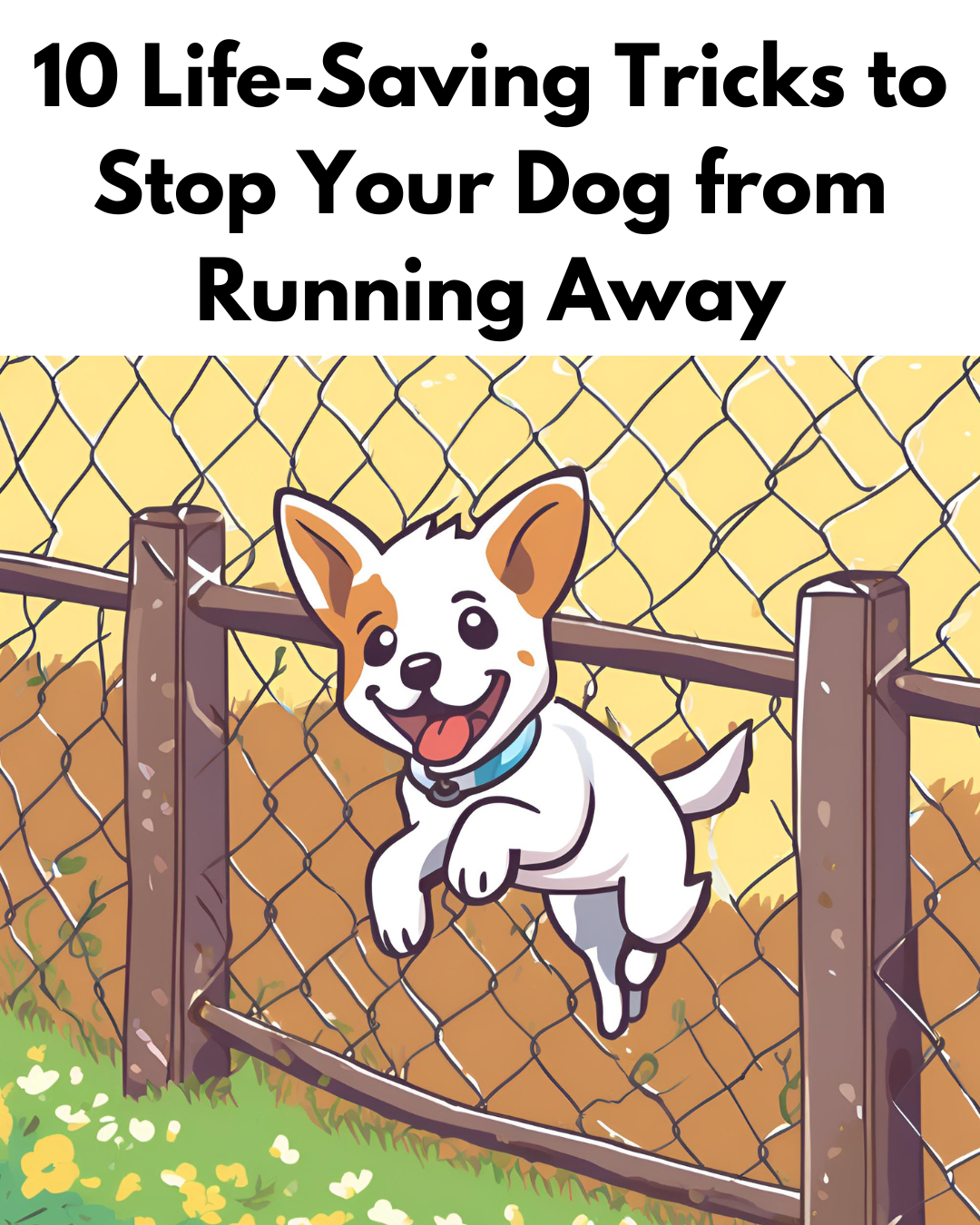When it comes to our dogs, we often think of them as our best friends, loyal companions, and family members. However, one of the most heart-stopping moments for any dog owner is realizing their beloved pet has run away. The fear and panic that set in are unparalleled. But worry not, because with the right strategies, you can ensure your dog remains safe and by your side. Here are 10 life-saving tricks to stop your dog from running away.
1. Understand the Root Cause
Before addressing the behavior, it's crucial to understand why your dog is running away. Dogs may bolt for various reasons:
- Fear or Anxiety: Loud noises like thunderstorms or fireworks can scare dogs into running away.
- Boredom: A lack of mental and physical stimulation can lead to escapist behavior.
- Mating Instincts: Unneutered dogs might run away in search of a mate.
- Curiosity: Dogs are naturally curious and might wander off to explore new scents and sights.
Identifying the root cause will help you tailor your approach to prevent future escapes.
2. Secure Your Yard
A well-secured yard is the first line of defense against a runaway dog. Here are some measures to consider:
- Fencing: Ensure your fence is high enough (at least 6 feet) and check for any gaps or weak spots. Consider adding a layer of chicken wire buried at the base to prevent digging.
- Gates: Always keep gates closed and locked. Self-closing and self-latching gates are ideal for preventing accidental openings.
- Supervision: Whenever your dog is outside, supervise them to ensure they are not attempting to escape.
3. Provide Mental and Physical Stimulation
A tired dog is a happy dog. Regular exercise and mental stimulation are key to preventing escape attempts:
- Daily Walks: Ensure your dog gets at least one long walk or several shorter walks each day.
- Playtime: Engage in interactive play sessions with toys, fetch, or tug-of-war.
- Training: Regular obedience training sessions can provide mental stimulation and strengthen your bond.
4. Use Positive Reinforcement Training
Positive reinforcement is an effective training method that rewards desired behavior. Here's how you can apply it:
- Recall Training: Teach your dog to come when called by using treats, praise, and affection. Start in a distraction-free environment and gradually introduce more distractions.
- Stay Command: Teach your dog to stay in place until released. Use treats and gradual increases in distance and duration to reinforce this behavior.
- Reward Compliance: Always reward your dog when they respond to your commands, reinforcing the behavior you want.
5. Spay or Neuter Your Dog
Unneutered dogs are more likely to run away in search of a mate. Spaying or neutering your dog can significantly reduce this instinctual behavior and has additional health benefits.
6. Create a Safe Space
Providing a safe and secure space for your dog can help reduce anxiety and the desire to escape:
- Crate Training: Use a crate as a safe haven where your dog can retreat when feeling stressed.
- Comfort Items: Include your dog’s favorite blanket, toys, and an item with your scent to provide comfort.
- Calming Aids: Consider using calming aids such as pheromone diffusers or anxiety wraps during stressful events like thunderstorms.
7. Ensure Proper Identification
In case your dog does manage to escape, proper identification can help ensure their safe return:
- Collar and ID Tags: Always keep a collar with updated ID tags on your dog. Include your phone number and address.
- Microchipping: Microchip your dog and ensure the information is up-to-date. This permanent form of identification can be scanned by veterinarians and shelters.
8. Build a Strong Bond
A strong bond between you and your dog can reduce the likelihood of them wanting to run away:
- Quality Time: Spend quality time with your dog through play, training, and relaxation.
- Affection: Show your dog affection and ensure they feel loved and secure.
- Consistency: Be consistent in your interactions and training to build trust and reliability.
9. Address Fear and Anxiety
Fear and anxiety are significant triggers for escape behavior. Addressing these issues can prevent your dog from running away:
- Desensitization: Gradually expose your dog to their fears in a controlled manner, rewarding calm behavior.
- Counter-Conditioning: Change your dog's negative associations with positive ones. For example, pair thunderstorms with treats and praise.
- Professional Help: If your dog’s anxiety is severe, consider consulting a professional trainer or behaviorist.
10. Utilize Technology
Modern technology can provide additional layers of security for your dog:
- GPS Trackers: Attach a GPS tracker to your dog’s collar to monitor their location in real-time.
- Smart Collars: Invest in a smart collar that includes GPS tracking, activity monitoring, and health insights.
- Security Cameras: Install security cameras in your yard to monitor your dog’s behavior and catch escape attempts early.
Conclusion
Preventing your dog from running away requires a multifaceted approach that combines understanding their motivations, securing their environment, providing adequate stimulation, and using modern technology. By implementing these 10 life-saving tricks, you can ensure your dog remains safe, secure, and by your side, where they belong.
The journey to preventing escape behavior is ongoing and requires patience, consistency, and a deep understanding of your dog’s needs. By investing time and effort into these strategies, you’ll not only protect your dog but also strengthen the bond you share, ensuring a happier, safer life for your furry friend.


